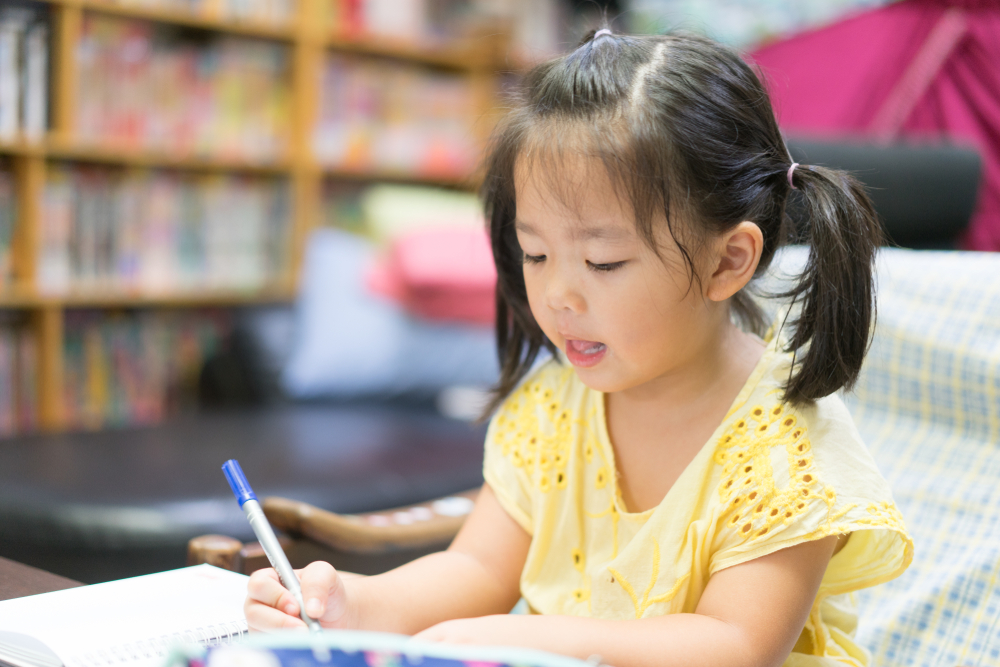Understanding opposites Worksheets for 5-Year-Olds
7 filtered results
-
From - To
Enhance your child's cognitive development with our "Understanding Opposites Worksheets for 5-Year-Olds." Perfectly tailored for curious young minds, these engaging worksheets from Kids Academy help children grasp essential concepts of opposites through fun, interactive activities. Featuring colorful images and simple instructions, they introduce kids to opposites like big and small, hot and cold, and more. Each worksheet is designed to strengthen critical thinking and vocabulary skills, making learning enjoyable and effective. Encourage your 5-year-old's growth in understanding the world around them with these expertly crafted worksheets!
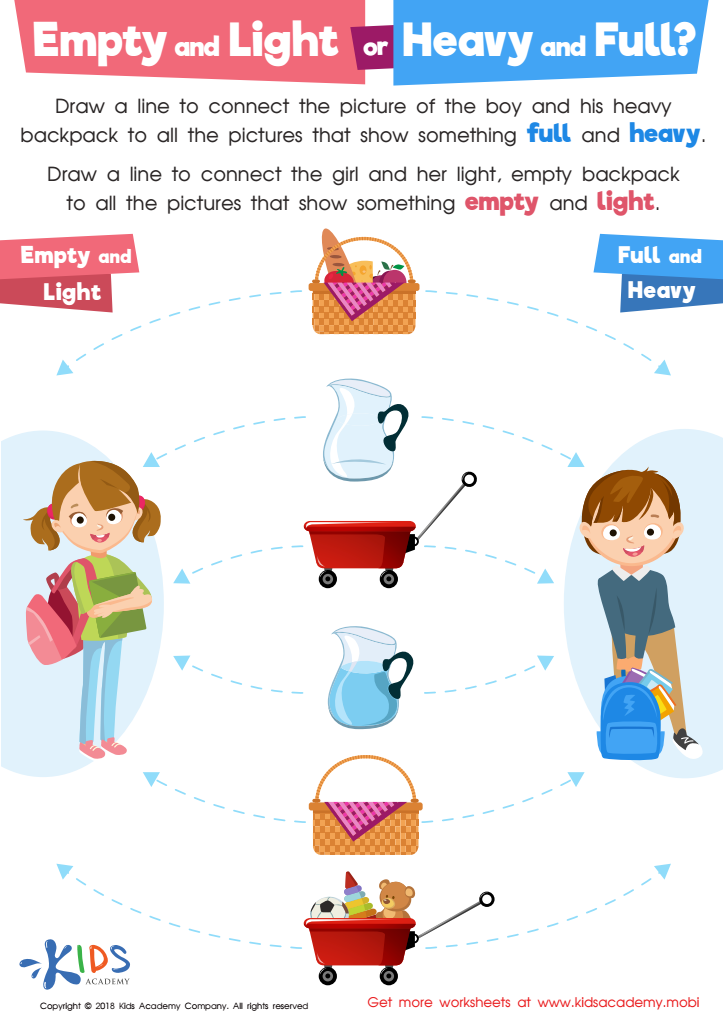

Empty and Light or Heavy and Full? Worksheet
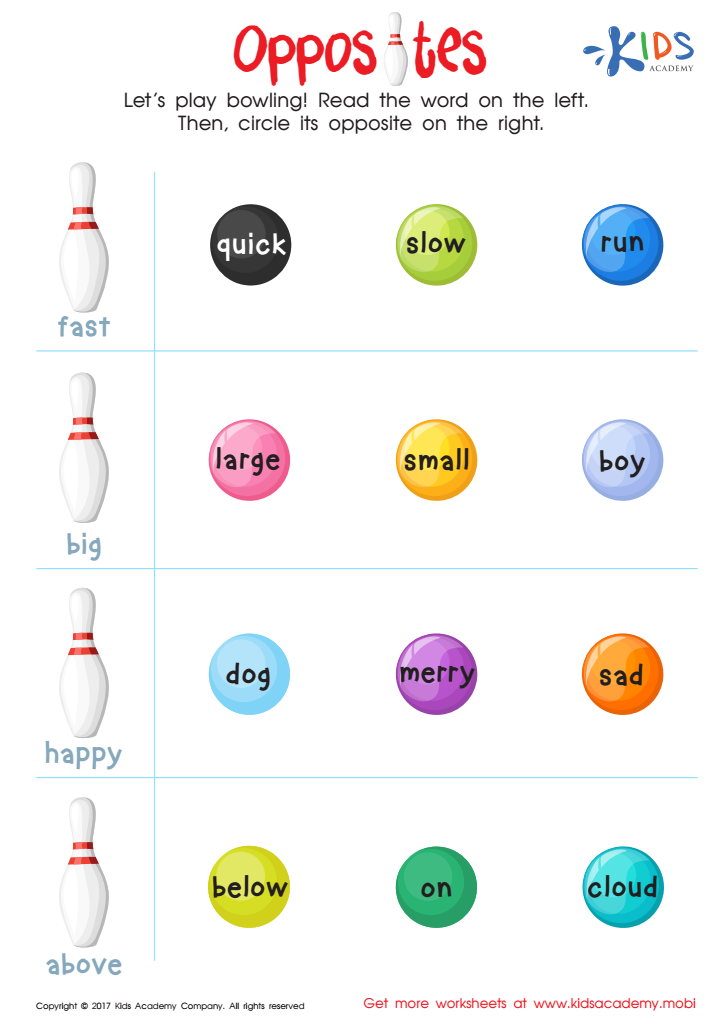

Opposites Worksheet
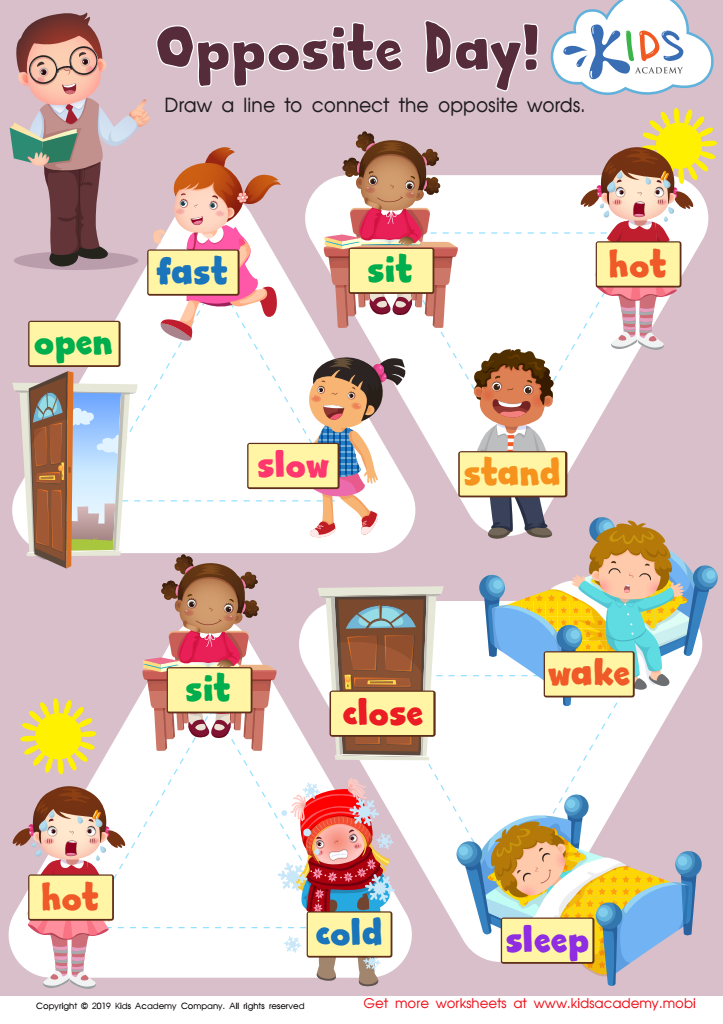

Opposite Day Worksheet
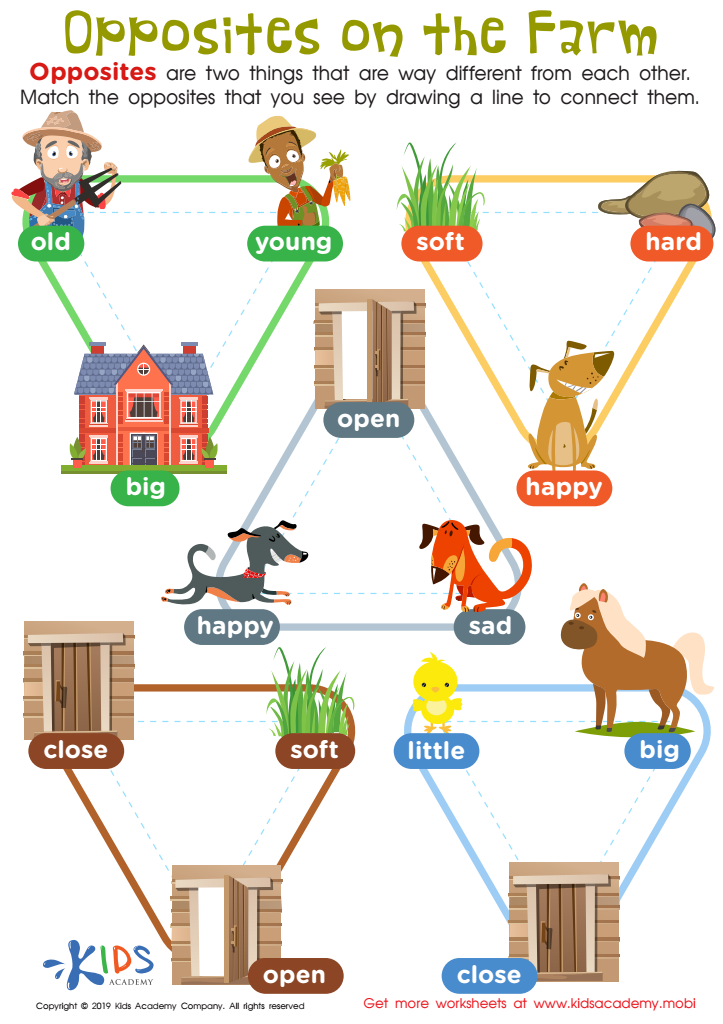

Opposites on the Farm Worksheet
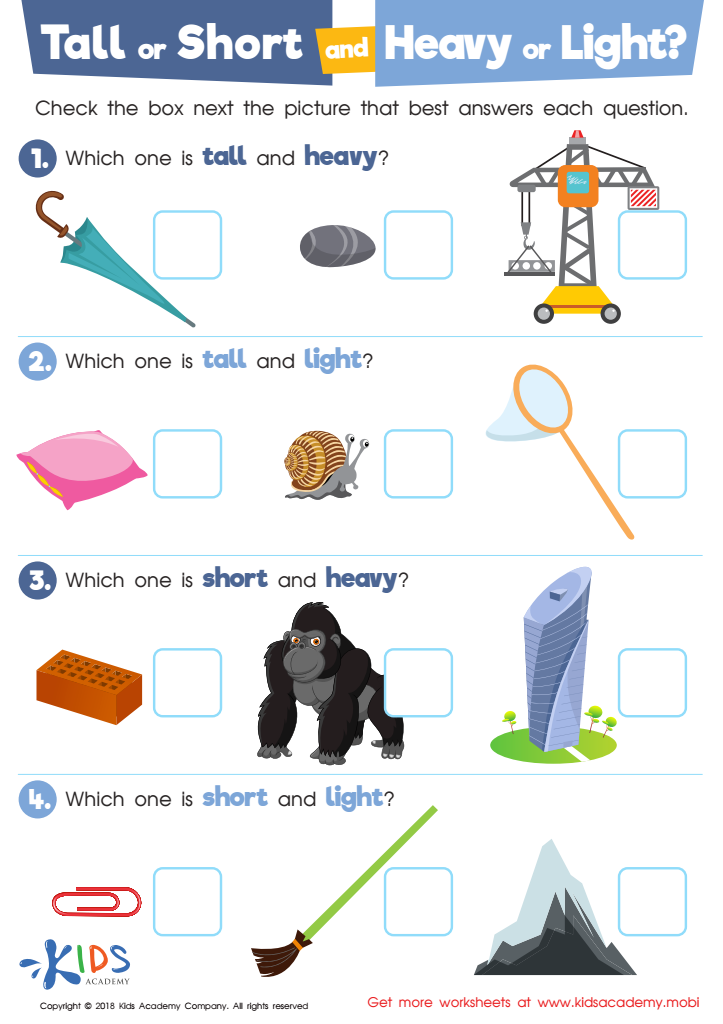

Tall or Short and Heavy or Light? Worksheet
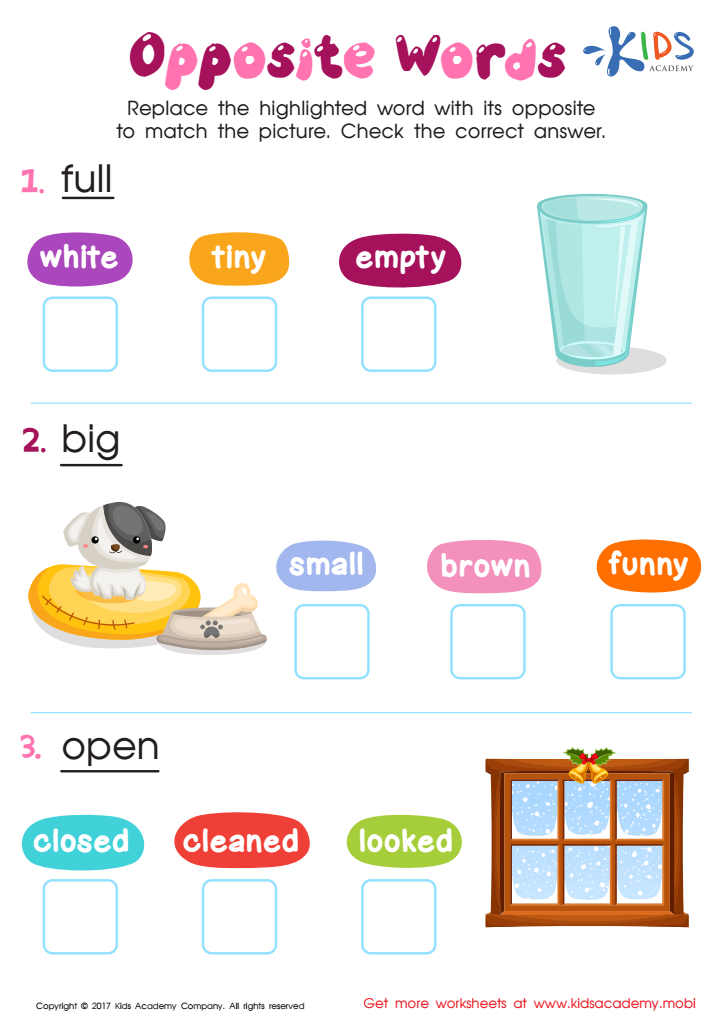

Opposite Words Worksheet
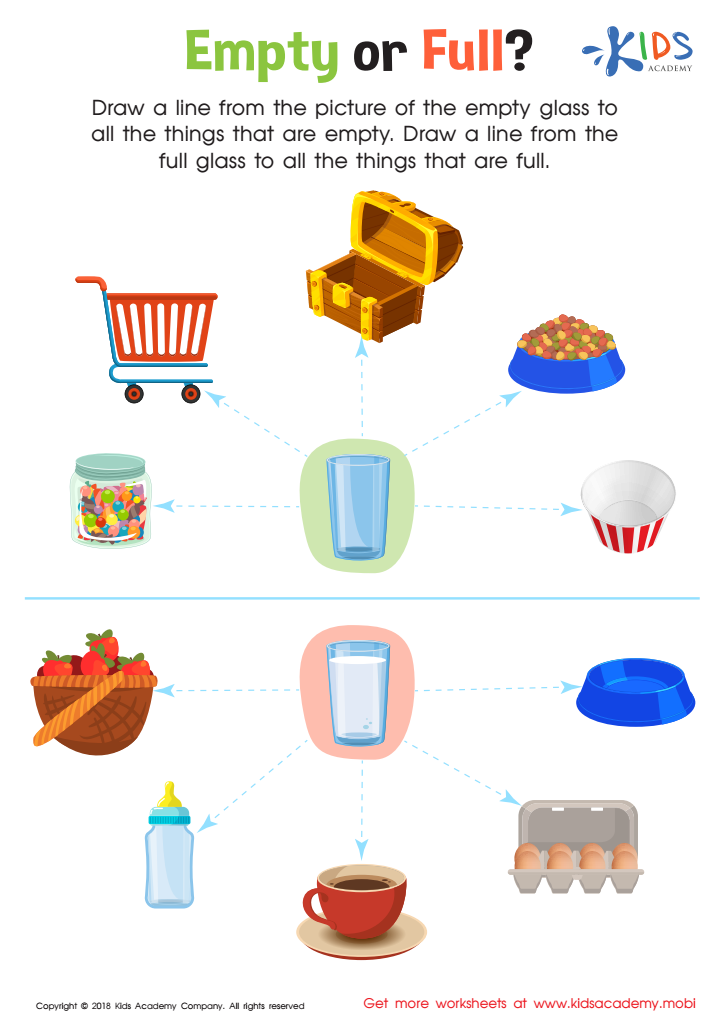

Empty or Full? Worksheet
Understanding opposites is crucial for 5-year-olds as it lays a foundational piece of their cognitive development and language skills. Opposites such as big/small, hot/cold, and happy/sad introduce the concept of contrast, which helps children comprehend the nature of objects, people, and experiences. Grasping these differences enhances their vocabulary, enabling them to express thoughts and feelings more precisely and understand others better.
From a cognitive perspective, recognizing opposites promotes critical thinking and problem-solving abilities. For instance, when children discern that “empty” is the opposite of “full,” they can better understand quantities and measurements. This skill is not limited to academic success but also helps in everyday situations, such as determining that wet shoes will be less comfortable compared to dry ones.
Socially, understanding opposites helps children navigate their interactions. Identifying when a peer is sad as opposed to happy can foster empathy and improve interpersonal relationships. For teachers and parents, focusing on opposites ensures that children are equipped with the cognitive tools that will support advanced learning topics in the future, such as comparisons in math or contrasting historical events. Ultimately, teaching opposites engages children's natural curiosity and builds a strong, versatile foundation for lifelong learning.

 Assign to My Students
Assign to My Students





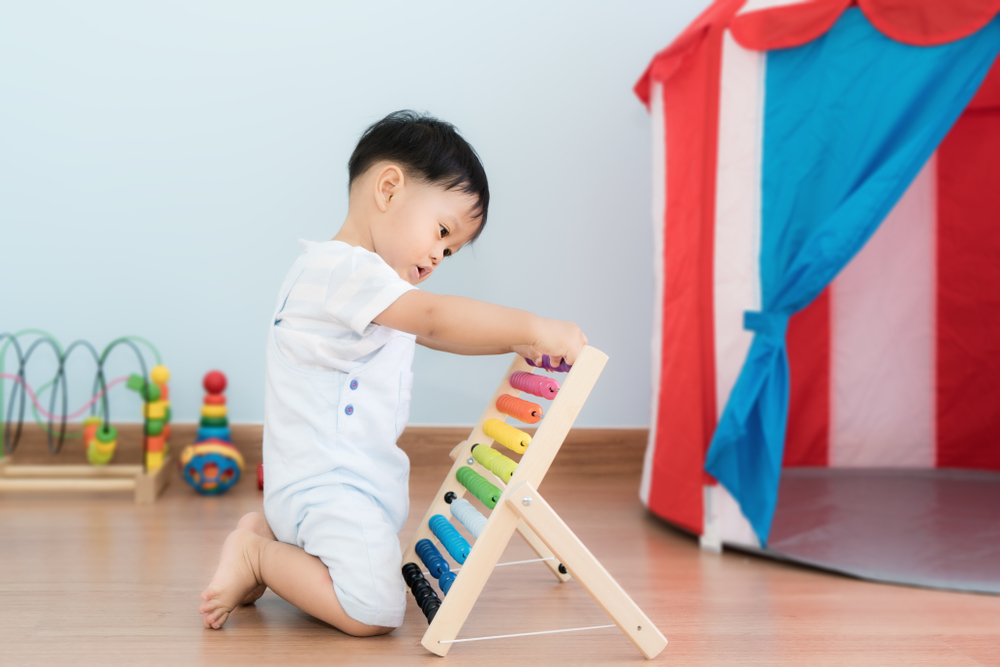
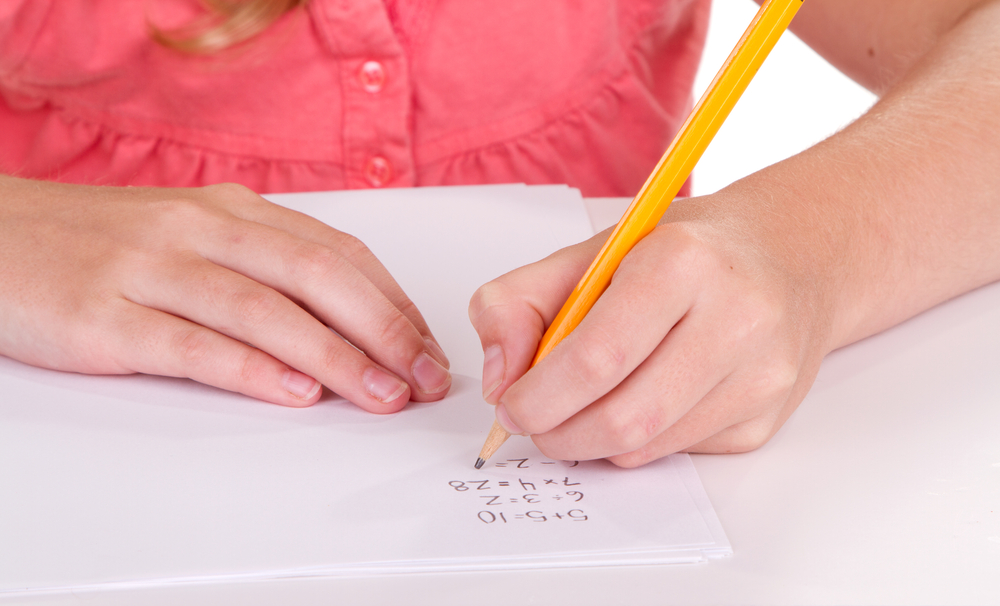

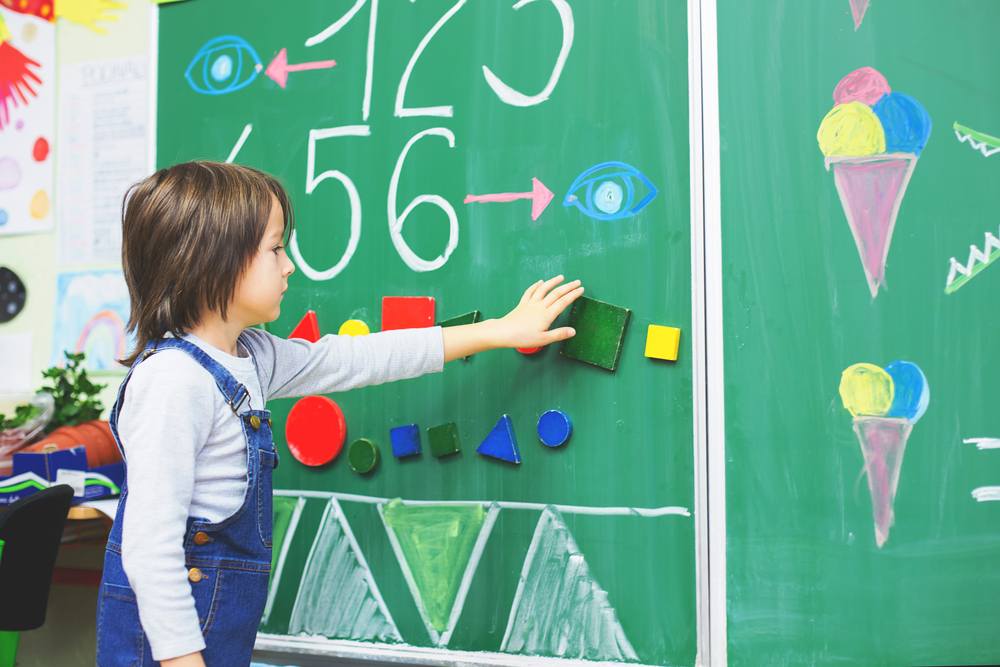
.jpg)
